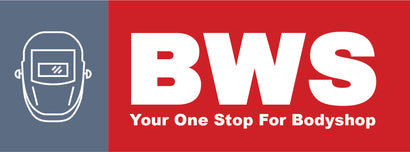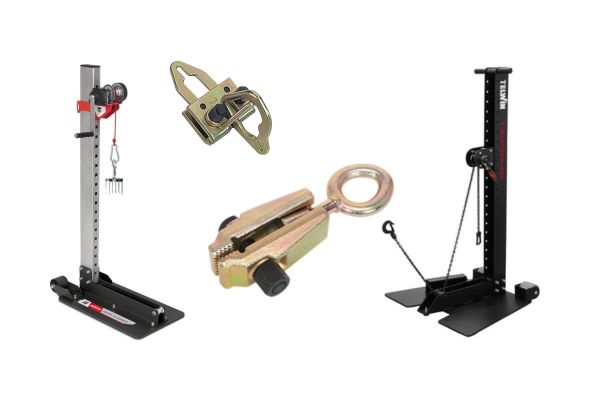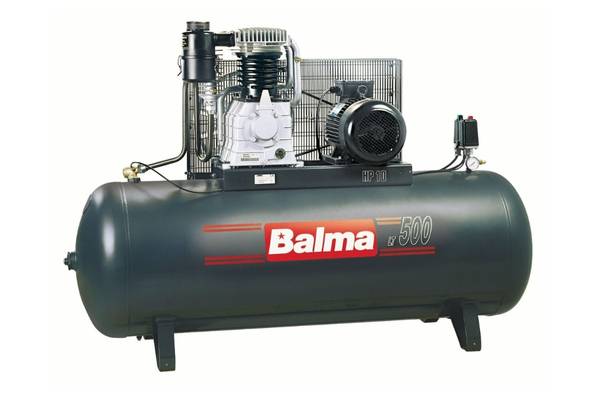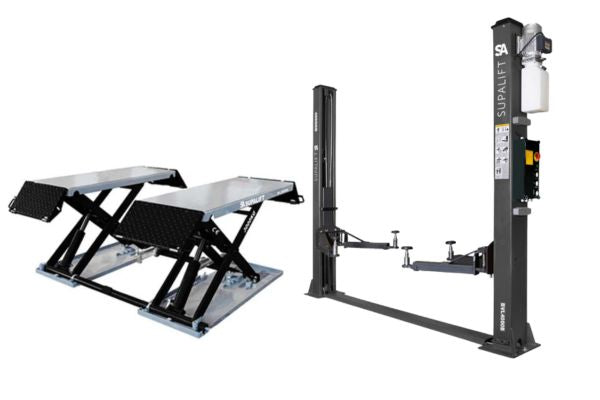Need Some Help? 0161 223 1843
Need Some Help? 0161 223 1843
BODYSHOP
WORKSHOP
WELDING
TOOLS
SAFETY

Safe Working With Electric Vehicles
April 19, 2020 7 min read
Introduction
With the growth in environmental awareness, the use of electric and hybrid vehicles (E&HVs) is increasing. The recovery, repair, and maintenance of these vehicles outside the manufacturers and franchised dealership networks is increasing. This webpage is aimed at people working with these vehicles in the motor vehicle repair and roadside recovery industries and also the emergency services.
[These vehicles are also referred to as a Battery Electric Vehicle (BEV), Hybrid Electric Vehicle (HEV) and Plug-In Hybrid Electric Vehicles (PHEV).]
Background
People in the motor vehicle repair and recovery industry are now more likely to come across E&HVs and as a result, need to be aware of the additional hazards they may be exposed to when working with these vehicles. They may also need to develop a wider range of skills and knowledge and have access to specialist tools and equipment in order to be able to work safely.

Voltages present in E&HVs are significantly higher (currently up to 650 Volts direct current (dc)) than those used in other vehicles (12/24 Volts dc). In dry conditions, accidental contact with parts that are life at voltages above 110 Volts dc can be fatal. For E&HVs dc voltages between 60 and 1500 Volts are referred to as ‘high voltage’. This terminology is used in this guidance although the high voltage is defined differently in other industry sectors.
Battery systems may contain chemicals that can be harmful if released. They also store significant amounts of energy that can give rise to an explosion if not dealt with correctly.
There are substantial differences in the designs of E&HVs from different manufacturers. Having information specific to the manufacturer and the vehicle being worked on is important in identifying what actions are necessary to work safely.

Types of vehicle
Electric vehicles
Electric vehicles use a large capacity battery and electric motor(s) to drive the vehicle. The battery needs to be charged from the electricity supply network when the vehicle is not in use although some energy may be recovered during braking.
Hybrid vehicles
Hybrid vehicles typically have two sources of energy, an internal combustion engine using either diesel or petrol for fuel and a battery. Hybrid vehicles will use the two sources of power automatically and may use both simultaneously. The internal combustion engine and energy recovered from the vehicle braking systems are used to charge the battery.
A plug-in hybrid vehicle can have its battery charged directly from the electrical supply network.

Risks of working with E&HVs
E&HVs introduce hazards into the workplace in addition to those normally associated with the repair and maintenance of vehicles, roadside recovery and other vehicle-related activities. These include:
- the presence of high voltage components and cabling capable of delivering a fatal electric shock.
- the storage of electrical energy with the potential to cause explosion or fire.
- components that may retain a dangerous voltage even when a vehicle is switched off.
- electric motors or the vehicle itself that may move unexpectedly due to magnetic forces within the motors.
- manual handling risks associated with battery replacement.
- the potential for the release of explosive gases and harmful liquids if batteries are damaged or incorrectly modified.
- the possibility of people being unaware of vehicles moving as when electrically driven they are silent in operation.
- the potential for the electrical systems on the vehicle to affect medical devices such as pacemakers.

Safe Working with E&HVs
Additional skills and training will be necessary to allow people to work safely with E&HVs. The levels of competency required will vary greatly and are dependent on the type of work that people are expected to do. For example, an awareness of the additional risks is likely to be all that is required for people who undertake vehicle sales or valeting. People involved in vehicle repair and maintenance, however, are likely to need a much greater level of competence in order to work on these types of the vehicle safely. Specific training with qualifications awarded by organisations such as IMI Awards is available.
Four categories of work have been identified. These are:
- Valeting, sales and other lower-risk activities
- An incident response including emergency services and vehicle recovery
- Maintenance and repair excluding high voltage electrical systems
- Working on high voltage electrical systems
These categories are outlined below with the suggested primary controls.
Valeting, sales and other lower-risk activities
Remote operation keys that only need to be close to the vehicle for the vehicle to be powered up should be kept away from vehicles. This is to prevent the vehicle from accidentally moving.
People who move these vehicles around the workplace should be aware that others may not hear it approaching them. Similarly, people who work around E&HVs should be aware that they may move without warning.
Pressure washing has the potential to damage high voltage electrical components and cables. High voltage cables are usually coloured orange. Refer to guidance from manufacturers before valeting in any underbody areas including the engine bay.
An incident response including emergency services and vehicle recovery
Vehicles should be visually checked for signs of damage to high voltage electrical components or cabling (usually coloured orange). Consider whether the integrity of the battery is likely to have been compromised. Shorting or loss of coolant may present ignition sources in the event of fuel spillage. If the vehicle is damaged or faulty, and if safe to do so, isolate the high voltage battery system using the isolation device on the vehicle. Refer to manufacturer’s instructions for guidance.
During any recovery onto a recovery vehicle, the remote operation key should be removed to a suitable distance and the standard 12/24v battery disconnected to prevent the vehicle from being activated/started.
Have access to reliable sources of information for specific vehicle types. For example, mobile data terminals used by fire and rescue services or by reference to the manufacturer’s data.
Avoid towing E&HV vehicles unless it can be determined that it is safe to do so. Dangerous voltages can be generated by the movement of the drive wheels.
Maintenance and repair excluding high voltage electrical systems
Refer to vehicle-specific sources of information from the manufacturer and trade bodies to identify precautions necessary to prevent danger.
Remote operation keys should be kept away from the vehicle to prevent any accidental operation of electrical systems and accidental movement of the vehicle. Keys should be locked away with access controlled by the person working on the vehicle. If the key is required during the work the person working on the vehicle should check that the vehicle is in a safe condition before the key is retrieved.
Visually check the vehicle for signs of damage to high voltage cabling (usually coloured orange) or electrical components before starting any work on the vehicle.
Unless a specific task requires the vehicle to be energised always isolate or disconnect the high voltage battery in accordance with the manufacturer’s instructions.
Determine the locations of high voltage cables before carrying out tasks such as panel replacement, cutting or welding. Take appropriate precautions to prevent them from being damaged.

Working on high voltage electrical systems
Refer to vehicle-specific sources of information from the manufacturer (and trade bodies) to identify precautions you need to implement which are necessary to prevent danger.
Remote operation keys should always be kept away from the vehicle to prevent any accidental operation of electrical systems and accidental movement of the vehicle. Keys should be locked away with access controlled by the person working on the vehicle. If the key is required during the work the person working on the vehicle should check that the vehicle is in a safe condition before the key is retrieved.
Visually check the vehicle for signs of damage to high voltage electrical components or cabling (usually coloured orange).
High voltage systems should be isolated (that is the power disconnected and secured such that it cannot be inadvertently switched back on) and proven dead by testing before any work is undertaken. Always isolate and lock off the source of electricity and in accordance with the manufacturer’s instructions. You must always test and prove that any high voltage cable or electrical component is dead prior to carrying out any work on it.



Even when isolated, vehicle batteries and other components may still contain large amounts of energy and retain a high voltage. Only suitable tools and test equipment should be used. These may include electrically insulated tools and test equipment compliant with GS38.
Some electronic components may store dangerous amounts of electricity even when the vehicle is off and the battery isolated. Refer to manufacturers data on how to discharge stored energy.
There may be circumstances (eg after collision damage) where it has not been possible to fully isolate the high voltage electrical systems and to discharge the stored energy in the system. Refer to the manufacturer’s instructions about what controls measures should be implemented before attempting to carry out further remedial work.
Battery packs are susceptible to high temperatures. The vehicle will typically be labelled advising of its maximum temperature and this should be considered when carrying operations such as painting where booth temperatures may exceed this limit. Measures should be implemented to alleviate any potential risks eg by removing the batteries or by providing insulation to limit any temperature increase in the batteries.
Working on live electrical equipment should only be considered when there is no other way for work to be undertaken. Even then it should only be considered if it is both reasonable and safe to do so. You should consider the risks for working on this live equipment and implement suitable precautions including, as a final measure, the use of personal protective equipment (PPE). Refer to manufacturer’s instructions for precautions when working live, including their PPE requirements.
It may be necessary to locate the vehicle within an area that can be secured such that people who could be put at risk are not able to approach the vehicle. Warning signs should be used to make people aware of the dangers.
Thank you to:-
https://www.hse.gov.uk/mvr/topics/electric-hybrid.htm
https://www.sbesc.com/programs/transportation/electric-vehicle
https://www.volkswagon.co.uk
Leave a comment
Comments will be approved before showing up.














































